Top Attractions of the Galilee
The Galilee can be divided into the Upper Galilee, Western Galilee and Lower Galilee; each has its own charm and attractions. The Galilee is characteristically lush and green with many streams and lakes to cool yourself. It was also here that Jesus spent the years of his ministry and the area is full of significant locations which appear in the Bible. In addition to the top attractions at the Sea of Galilee listed below there are numerous nature reserves, hiking paths, places to ride horses and wineries.
Church of Annunciation, Nazareth. Photo credit: © Shutterstock
The Best Attractions in Lower Galilee (Nazareth area)
Church of the Annunciation - the Basilica of the Annunciation was built on the site believed by Roman Catholics to be where Mary was visited by the Angel Gabriel who told her of her impending pregnancy and future son. The church is said to be built on the grotto which was Mary’s childhood home in Nazareth.
There were earlier churches on this site but the present structure was built in 1969. The most impressive part of the church is the courtyard where there are mosaics featuring the Virgin Mary and baby Jesus. The mosaics come from Christian communities around the world and each depicts the Holy figures as they see them for example the Japanese Madonna wears a kimono.
St. Gabriel's Church of Nazareth - this is one of two Churches of the Annunciation in Nazareth, established in the Byzantine era and rebuilt in the Crusader era and later again in the 18th century. The church is built over the natural spring which Eastern Orthodox Christians believe to be where Mary was informed by the Angel Gabriel of her future son. On the ground level of the church, you can see the water running into a well. The church boasts a colorful wooden “templon” screen painted with religious icons. On the ceiling are murals and a golden chandelier.
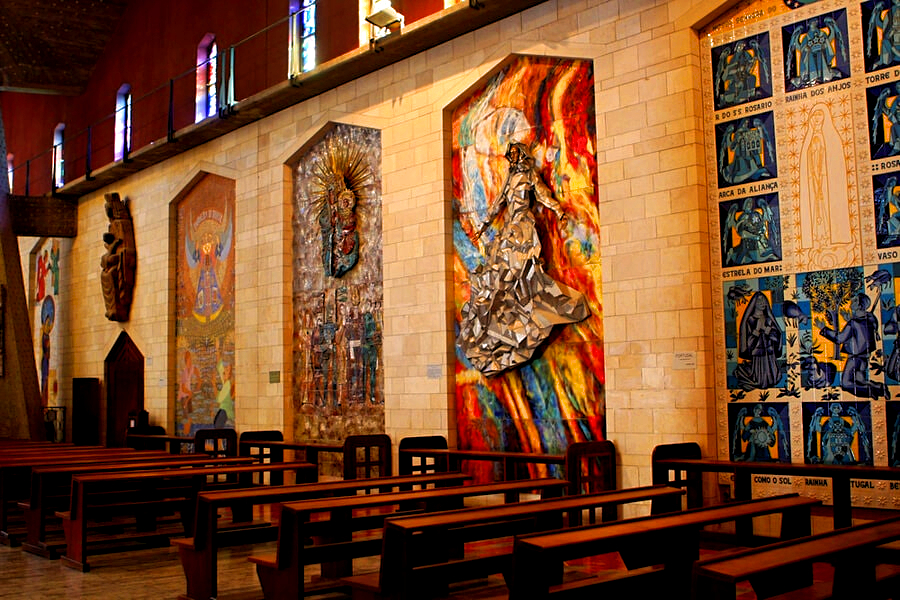
Interior of the Annunciation Chruch, Nazareth. Photo credit: © Shutterstock
Nazareth Village - this open-air museum is a reconstruction of biblical Nazareth featuring elements of village life in Galilee at the times of Jesus. Here you can see homes, olive presses, figures dressed in traditional period costumes, and see demonstrations of traditional crafts and domestic chores from 2,000 years ago. The site offers an interactive experience where you can try your hand at different activities.
Mensa Christi Church of Nazareth - this Franciscan church was built in 1861 and is famed for the Table of Christ, a granite slab believe to be the rock Jesus used as a table when dining with the disciples after his resurrection. Today the slab forms the church altar. The church has recently been restored including the mosaics and dome. Although the church is locked most of the time it can be visited on request. The name Mensa Christi is also associated with a church in Tabgha, the Church of the Primacy of St. Peter.
Ancient Bath House of Nazareth - The bathhouse is nestled between Mary’s Well and the Greek Orthodox Church of St. Gabriel in the shade of a tall ficus tree. When excavated artifacts were uncovered dating back to the ancient Roman era. Today there are guided tours of the caldarium, heated tunnels of the hypocaust, and the former furnace. There is a permanent exhibition about the excavations and above the site is a store selling local handmade craft items.
Church of St. Joseph - this Romanesque church stands above the grotto thought to have been Joseph’s home and workshop in Nazareth. The church which stands here today was constructed in 1914 over the ruins of earlier churches. In the crypt, you can see mosaics, an ancient water pit, and 1st-century grottos.
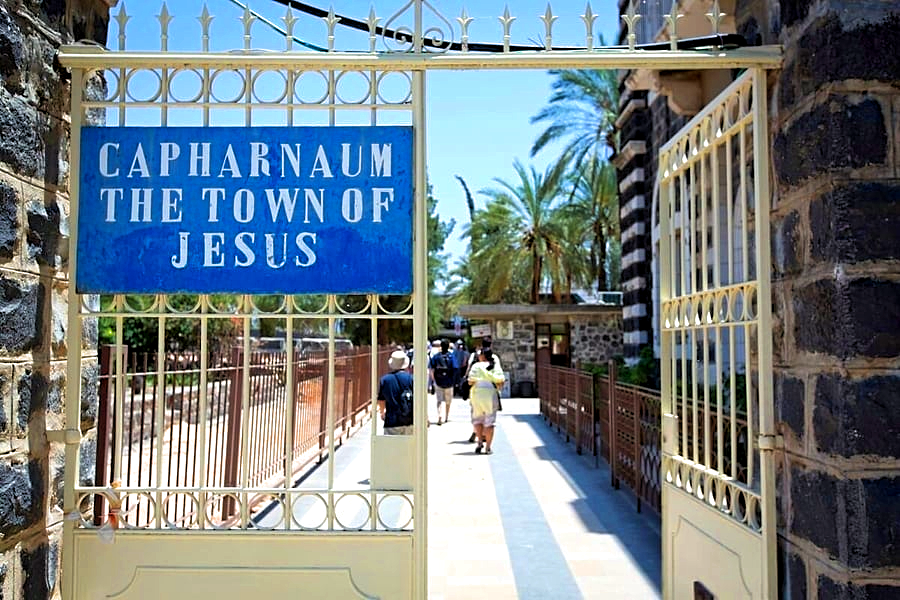
Capernaum, the town of Jesus. Photo credit: © Shutterstock
Mount Precipice - just south of Nazareth on the cliffs of Mount Kedumim is Mt. Precipice overlooking the Jezreel Valley and Mount Tabor. On the mount, excavations uncovered the remains of prehistoric settlements and 18 layers of ancient civilizations. One of the findings was a group of 13 Neanderthal skeletons dating back 50,000 years. On the top of the mount are several ancient tombs, cisterns, and a mosaic as well as breathtaking views. Mt. Precipice is mentioned in the Bible in Luke 4 16-30 when Jesus is driven from the synagogue and crowds threatened to throw him from the cliffs.Mount Tabor - just 9km east of Nazareth is the Mount of Transfiguration where the Old Testament tells of the battle between Barak and the Israelite Deborah. Christians believe this to be the site of the transfiguration of Jesus. Today the mount is a popular hiking and hand gliding site. Visitors can go to the hilltop Franciscan Church of Transfiguration or the Greek Church on the eastern slope.
Capernaum - situated on the shore of the Sea of Galilee began as a small fishing village during the Hasmonean dynasty (c.140BC- c.116BC). It is mentioned in all four of the Gospels as the hometown of St. Simon Peter, James, Andrew, and John. Jesus is said to have taught in the synagogue, cured a Roman Centurion’s servant, and cured a possessed man. Today the village is known for the archaeological discovery of two synagogues built on the same site during different periods.
One is a 4th-century white limestone structure and the older synagogue was built of local black basalt rock. Today visitors can see the ancient ruins of Capernaum within an excavation site where there is also a Late Roman synagogue and the octagonal-shaped church built above the excavated house of St. Peters. Within the church, you can look down through an opening in the floor and see the excavated house. The complex includes the ruins of Byzantine homes and early Roman houses.
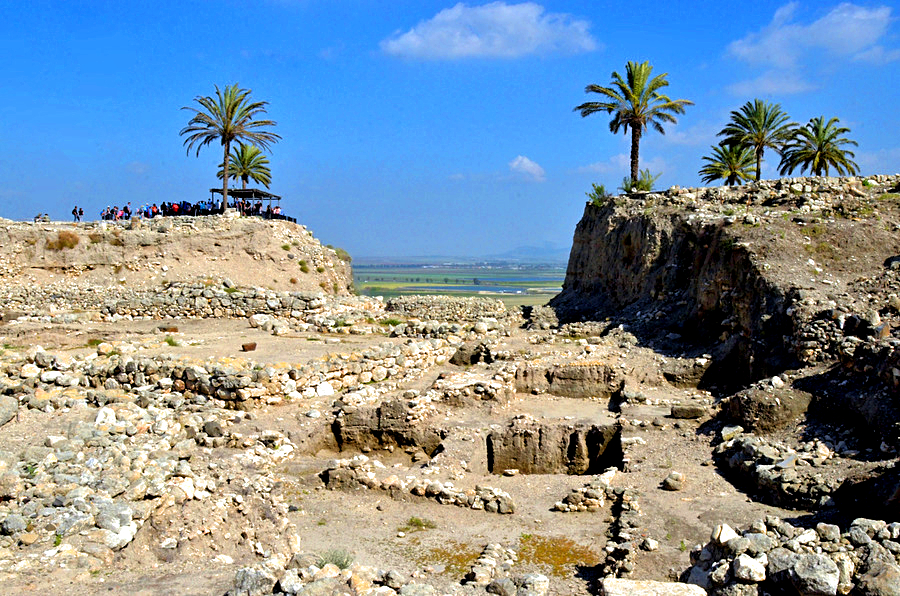
Megiddo (Armageddon). Photo credit: © Shutterstock
Tiberias - the capital of Galilee is one of the four Jewish Holy cities; it is located on the western shore of the Sea of Galilee. Today the city has many modern attractions, boat excursions, a craft market, and luxury hotels. Tiberius is also the site of a Greek Orthodox Church at the southern end of the modern city which used to be an Ottoman city.You can see the walls of the 18th-century Ottoman city which run right down to the water’s edge. There is an open-air museum of ancient artifacts among the high-rise hotels and at various points in the city, you can see the remains of the ancient Ottoman walls. Hamat Tiberias National Park is a spa of hot springs which was used as far back as the Romans. At the site, there is a small museum in part of the original building and a synagogue dating back to the 3rd-5th century AD with a magnificent mosaic.
Tiberias has a famous cemetery with graves of both Jewish and Muslim deceased. The Greek Orthodox Church and Monastery of the Twelve Apostles is a religious complex where there are three chapels, St. Peters, Mary Magdalene's, and St. Nicholas’. The tomb of Rabbi Moshe Ben Maimon (Rambam or Maimonides) is located in Tiberias. Rambam is a revered Jewish sage and rabbi who died in 1204.
Other sites in Tiberias include the Crusader’s St. Peter Church; the Citadel, now housing an art gallery; the Antiquities Museum; the excavated Jewish Court complex of 19th-century synagogues and the Scottish Compound, now a hotel and church which was once the 19th-century Scottish enclave.
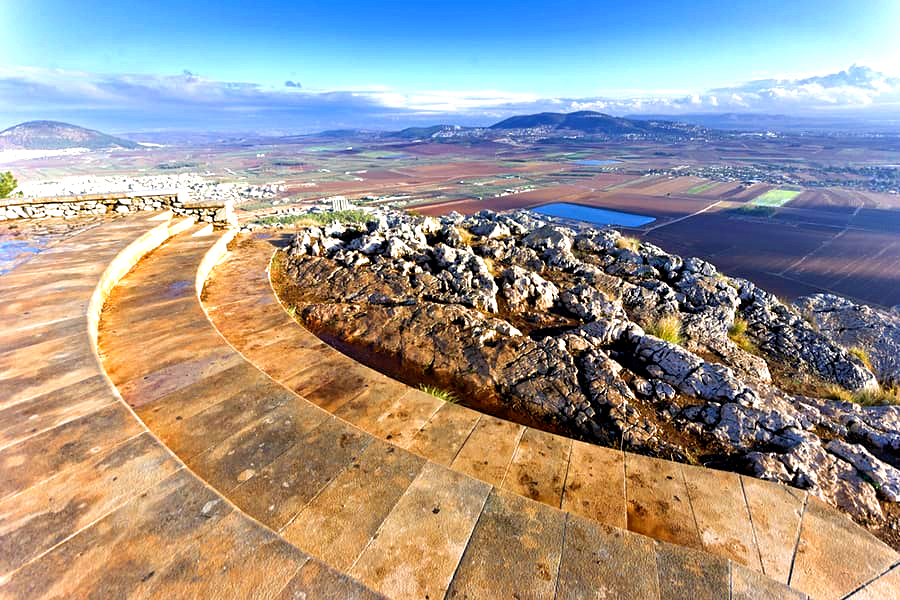
Mount Precipice. Photo credit: © Shutterstock
Jordan River - It is possible for Christians to be baptized in the Jordan River at one of the sites which claim to be where John the Baptist baptized Jesus. Although there is another baptismal site further south this is perhaps the most popular. Here there is a visitor’s center where you can buy a white robe to enter the water and get a certificate attesting to your baptism. There are steps and railings to help you get in and out of the water.
Wedding Church - Cana is the town where Jesus turned water into wine at a wedding feast (John 2:1-11). The town of Cana is also referred to several times in the Bible in other contexts. The Franciscan Wedding Church commemorated the иiblical miracle, it was constructed in 1879 on a site where ancient stone wine jars were found. A nearby Greek Orthodox church is an alternative site of the miracle.
Tel Megiddo - this tel or hill was a strategically important location in ancient times as it overlooked trade routes and the Jezreel Valley. At one point it was an important city-state and approximately 26 layers of ruined ancient civilizations have been found during excavations of the tel.
The Greek name for the site is Armageddon and it is said to be the site where the final battle will take place during the end of time according to the Book of Revelations. Visitors can explore the archaeological site, enter through a Solomonic gateway; see an ancient altar; a grain pit; stables, and a complex water system with a 35-meter deep shaft and tunnel. There are also the remains of what may be the oldest remaining church in Israel.
Jesus Trail - if you love to hike and want to really get to know the Galilee first hand then you can follow this hiking trail which links significant Christian sites in Galilee. Along the route, you will encounter Cana, Nazareth, a Roman Road, the Sea of Galilee, Tabgha, and Mount Tabor among other sites.
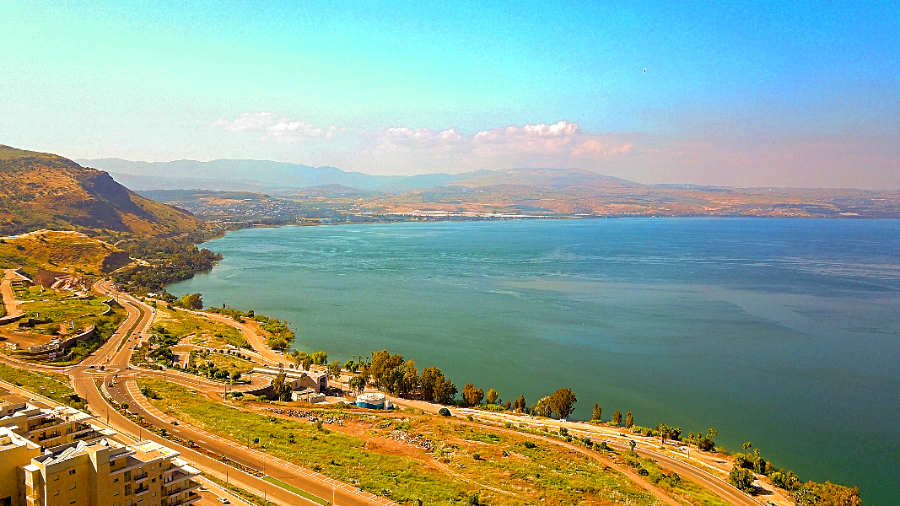
Sea of Galilee. View from Photo by Johnnie Cohen on Unsplash
The Best Aattractions in Upper Galilee (Safed Area)Safed Visitors Center - not only can you get maps and info at this center but you can see a permanent exhibition, an excavation site under the building, and a short introductory film to the history and culture of Safed.
Abuhav Synagogue - this Safed synagogue dates back to the original structure of the 1490s. The rest of the synagogue was constructed after an earthquake in 1837 destroyed most of the structure. The synagogue was built according to the Kabbalistic principle, there are ancient scrolls kept here and the walls are decorated with beautiful frescoes.
Ashkenazi HaAri Synagogue - built in honor of Rabbi Isaac Luria, also known as the Ari. Luria was a Kabbalistic Rabbi who arrived in the city in 1570 and prayed in this synagogue. The highlight of this Safed synagogue is the beautifully painted Ark where Torah scrolls are kept.
Sephardic HaAri Synagogue - this Safed synagogue is thought to have been built in 1522. Rabbi Luria also prayed here regularly. Legend has it that the Prophet Elijah would appear before the Rabbi as he sat studying here and enjoying the view of Mt. Meron.
Meiri House Museum - the Meiri family settled here after immigrating from Iran in 1837. They established the country’s first dairy in this 16th-century house. The house has a fascinating history and was used for many purposes over the years. See a timeline of events in Safed history, see authentic furniture and historic household items and documents.
Karo Synagogue - this historic building in Safed was once the headquarters of the rabbinical court and here Rabbi Karo, author of the Shulchan Aruch, together with other religious leaders laid down Jewish law.
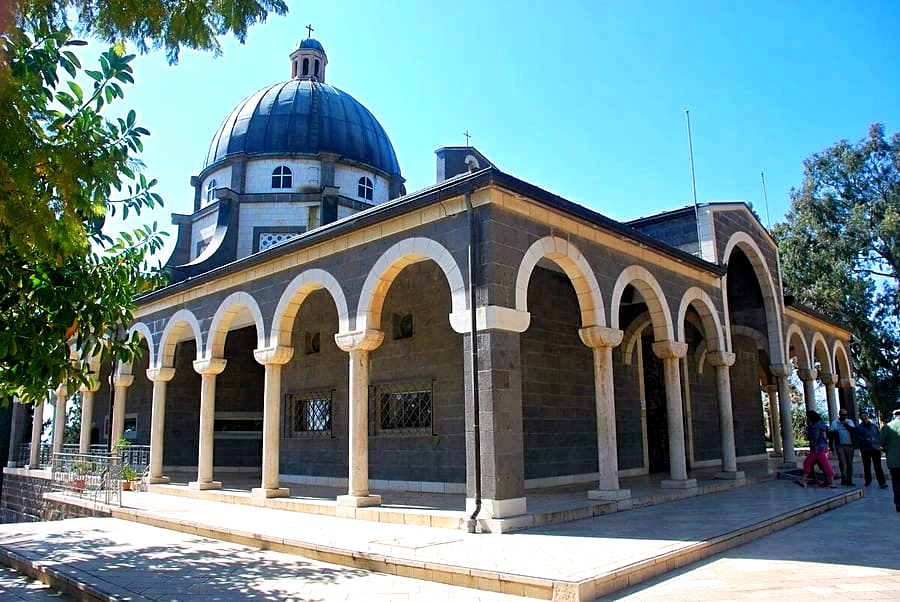
Mount Beatitudes. Photo credit: © Shutterstock
International Center for Safed Kabbalah Visitor Center - have the Kabbalah experience, just like Madonna, Kushner, and other celebs. This ancient Jewish mystical belief is based on the religious book The Zohar. Here you can see audio-visual presentations, use interactive media stations, learn about Kabbalistic art and get brilliant views from the roof of the historic building which houses the center.Artists’ Colony, Safed - Wander the narrow cobbled streets with ancient stone buildings on either side. In the stores, you will find art galleries, Judaica, hand-made jewelry, pottery, weaving, and paintings all inspired by the spirituality atmosphere of Safed.
Stam Center Safed - here you can learn about the art of writing holy texts for Torah scrolls, mezuzot, and tefillin. A writer of these texts needs to be highly skilled and follow strict rules. See a multi-sensory audio-visual presentation and learn about the mystical meaning behind Hebrew letters.
Sea of Galilee - perhaps the highlight of any trip to the Galilee is a visit to the Sea of Galilee or Kinneret. The main source of Israel’s large freshwater lake is the Jordan River which flows in at the northern end and out at the southern end. The sea will be familiar to Christians as the site of many significant biblical events. Many chapels and churches on the seashore mark these events.
It was here that Jesus walked on water, that he went to sea with the fishermen, and where they performed several miracles like calming the sea. Today visitors usually start their exploration of the Sea of Galilee in Tiberius, the largest city on the seashore. You can participate in water sports, swim, take boat excursions, use the beaches for camping or just enjoy the tranquil setting. You might like to enjoy a delicious meal of freshly caught fish from the Sea of Galilee.
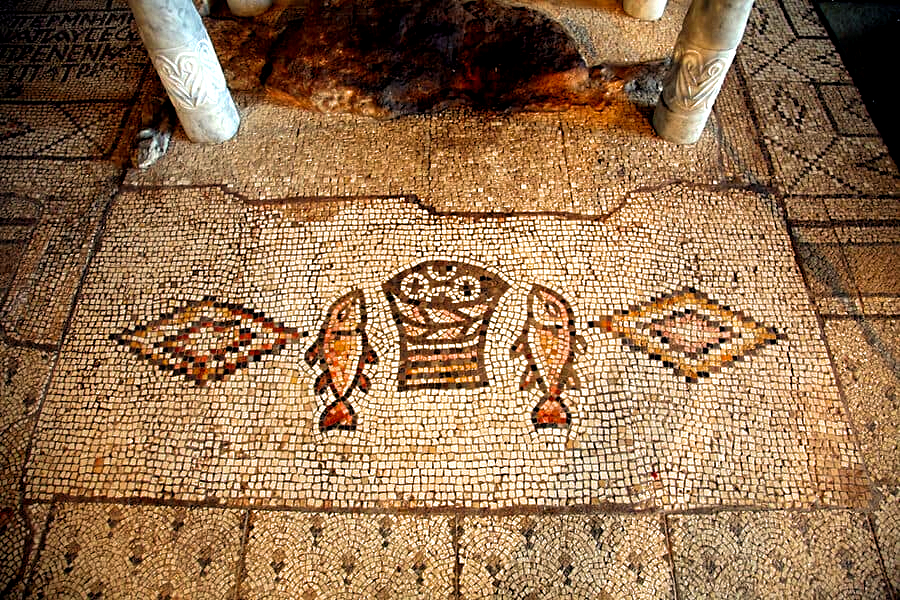
The Church of the Multiplication of the Loaves and the Fishes, Tabgha, Israel. Photo credit: © Shutterstock
Domus Galilaeae - this modern church shared the peak of the Mount of Beatitudes and was completed in 2000. It is a large complex used for Christian seminars and conventions.
Hula Valley - located above the Sea of Galilee, with the Hula Lake at its heart. The Hula Nature Reserve is a wetland and home to tens of thousands of aquatic birds. It is both a stop for migrating birds and home to local species. Visitors can walk along hiking trails and over floating bridges across the swamps or observe the birds from special “hides” or blinds. At the Oforia Visitors Center visitor can see a model of the Hula Valley, multimedia presentations with special effects, and dioramas. There are interactive computer screens with quiz questions.
Manara Cliff - in the Upper Galilee, near the Lebanese border, this mount overlooks the Hula Valley. Visitors can hike or take a cable car to the top of Manara Cliff for amazing views. At the top of the mount, there are various attractions like arts and crafts for kids and extreme sports activities. To get down from the mount you can hand glide, hike, cycle, take the cable car, or take the super cool toboggan all the way down. Manara is popular with extreme sports enthusiasts who can try snappling, climbing, archery, and omega.
Mount Meron - this is the highest peak in Israel (not including the Golan Heights) and the site of the highest nature reserve. Although not all the mount can be hiked there are marked paths in some areas. The mount has religious significance for the Jewish community as it is the site of the Tomb of Rabbi Shimon Bar Yochai (Rashbi) a 2nd-century sage. On the anniversary of the Rabbi’s death on the Jewish holiday of Lag BaOmer thousands of people gather on the mount to pay homage at the tomb.
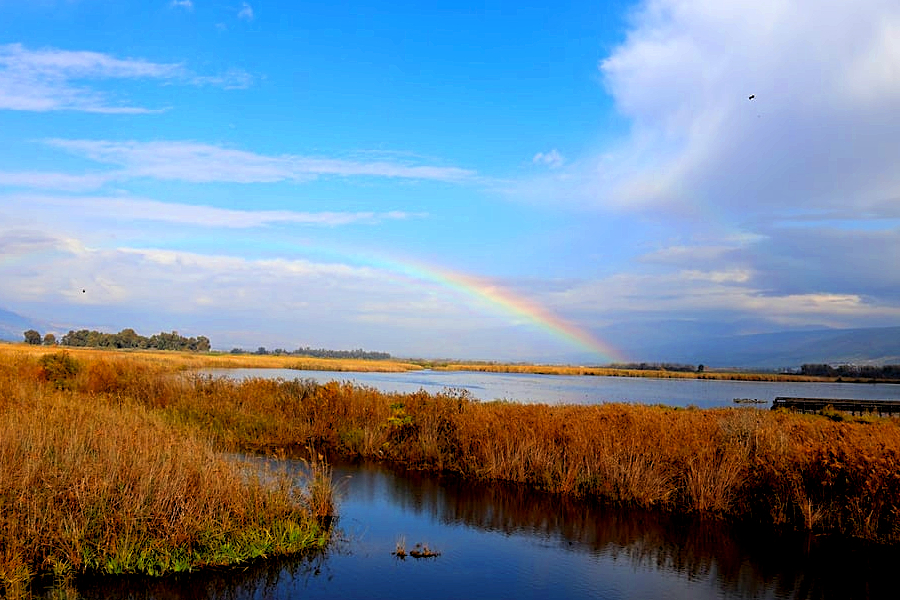
Rainbow in the Hula Valley. Photo by Shalev Cohen on Unsplash
The Best Attractions of the Coastal Plain
Rosh HaNikra grottoes - these chalk cliffs and sea caves are located on the border with Lebanon in the Western Galilee on the edge of the Mediterranean. In addition to having a fascinating history that includes pirates, arms traders, British troops, and a secret railway the site is simply breathtakingly beautiful.
Visitors descend the white chalk cliff by cable car overlooking the sea and enter a 200-meter labyrinth of caves that have been formed over centuries by the water beating against the stone. The reflection of the white caves makes the water appear milky turquoise. In the vicinity are a number of nature reserves.
Mount Carmel - Mount Carmel in northern Israel, near Haifa, is one of the world's 500 UNESCO bioreserves. It is home to unique plants, trees, and animals. Lots of hiking trails offer a plethora of activities and are accessible year-round. The word “karmel” is supposedly a compound of “kerem” and “el”, meaning "vineyard of God". In Jewish, Christian, and Islamic thought, Elijah is associated with Mount Carmel, and it is believed that he sometimes lived in a cave there.
If you are interested in visiting top Galilee sites, join one of our Galilee and Golan tours.
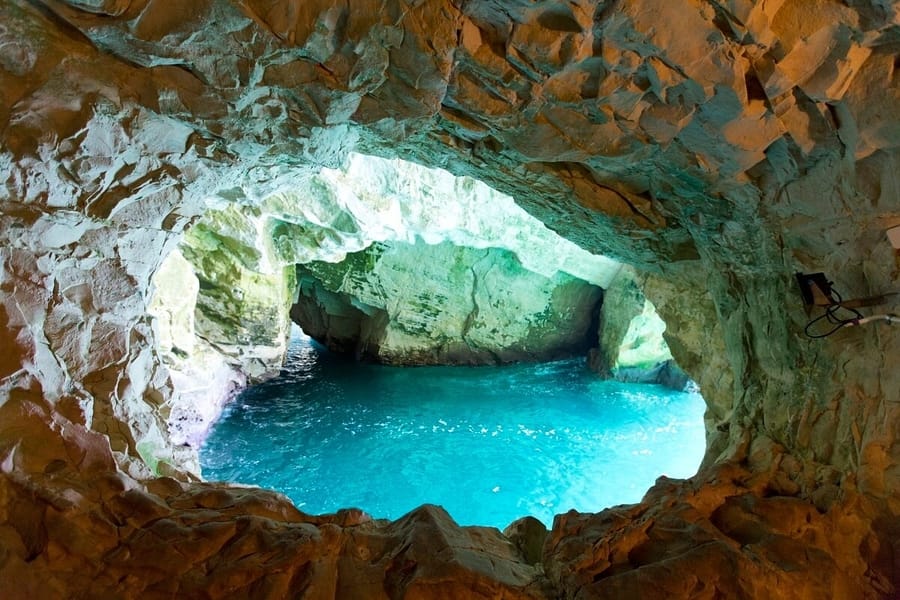
Limestone Grottos of Rosh Hanikra. Photo credit: © Shutterstock
 Login / Register
Login / Register
 Contact Us
Contact Us
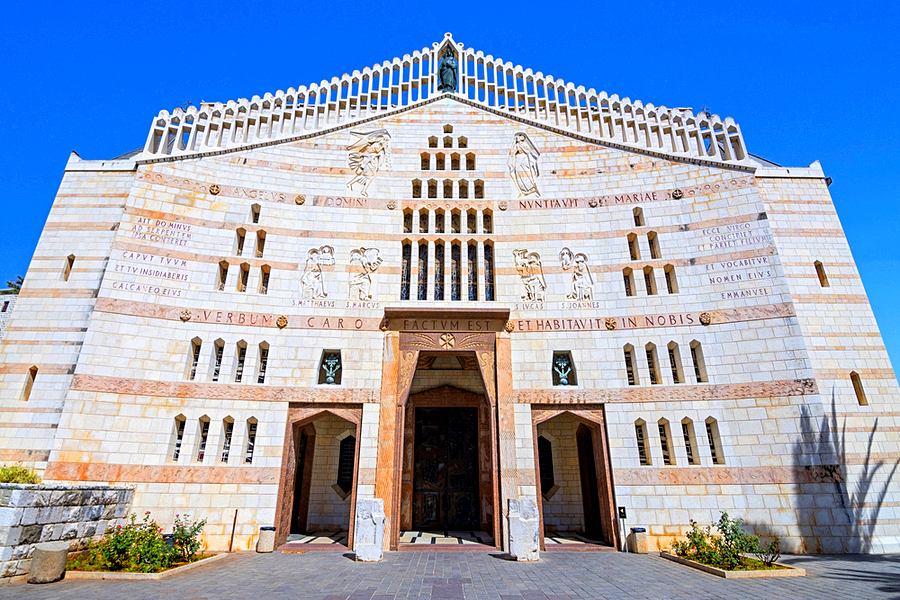
 Certificate of Excellence
Certificate of Excellence Guaranteed Departure
Guaranteed Departure Low Prices Guaranteed
Low Prices Guaranteed 24/7 Support
24/7 Support




